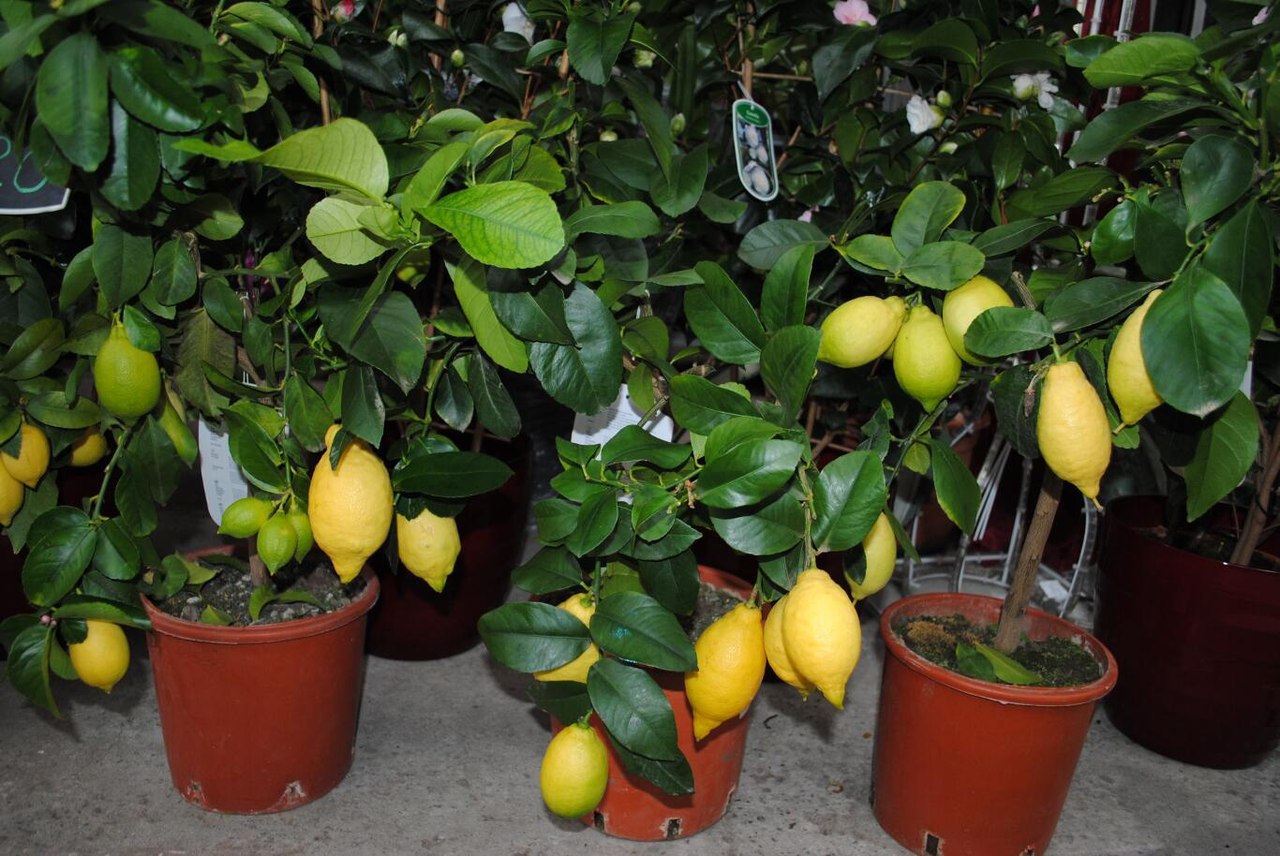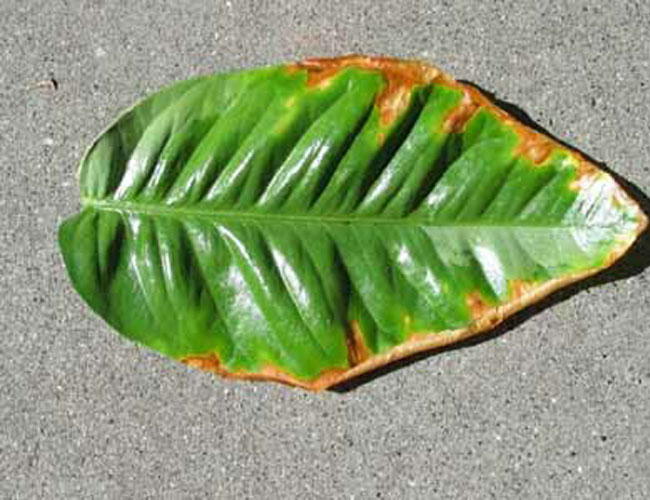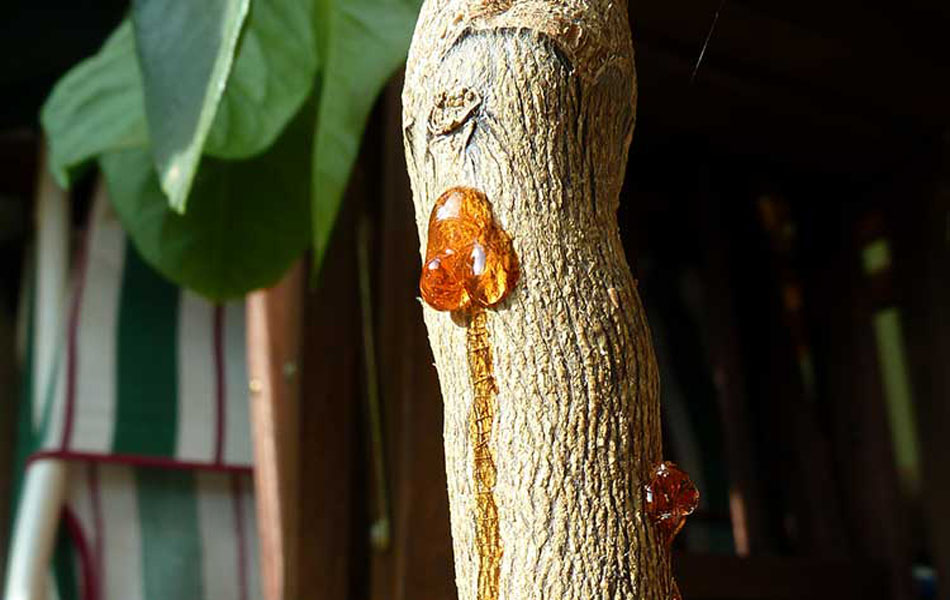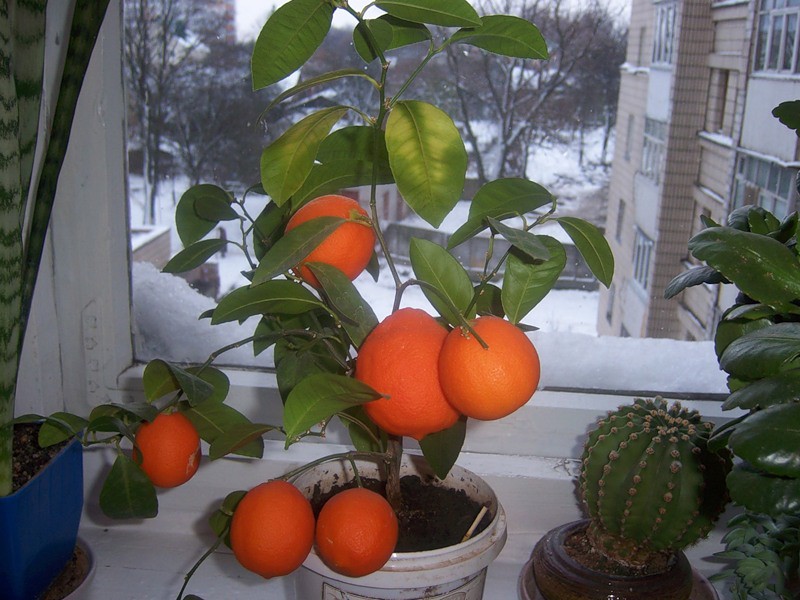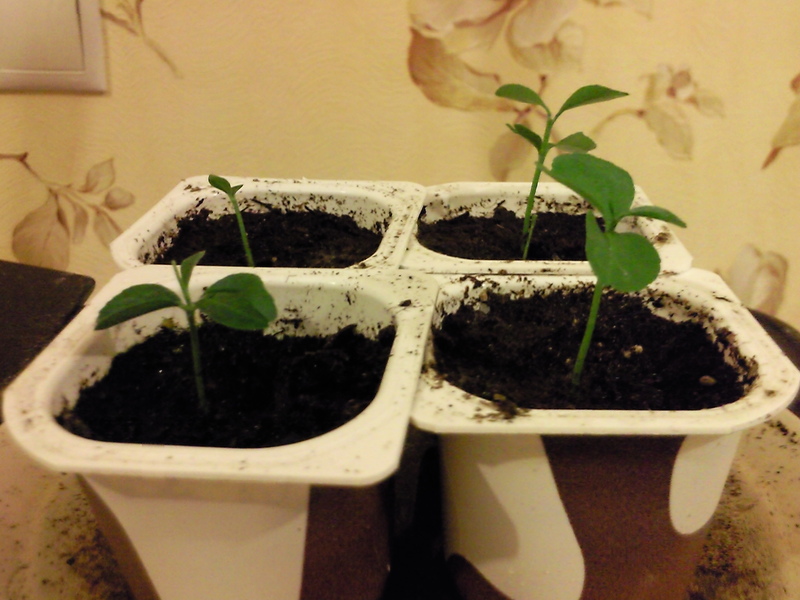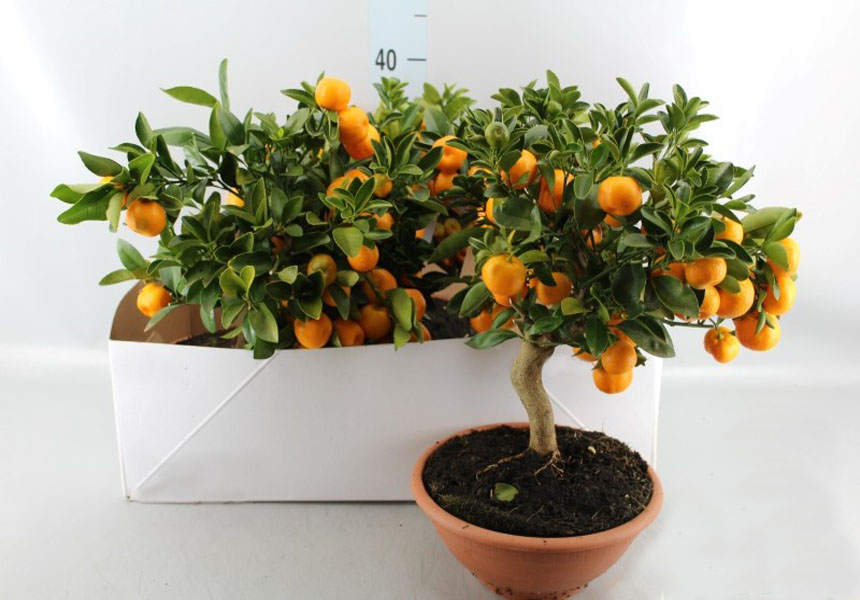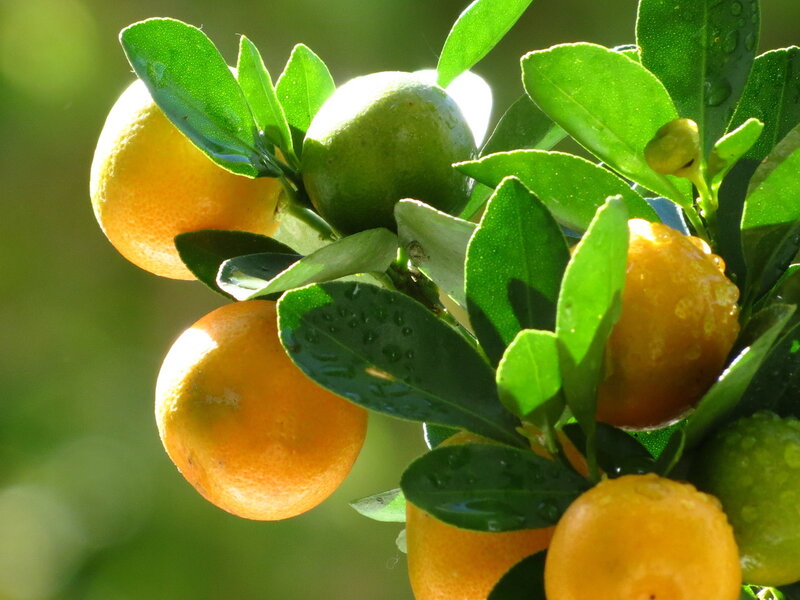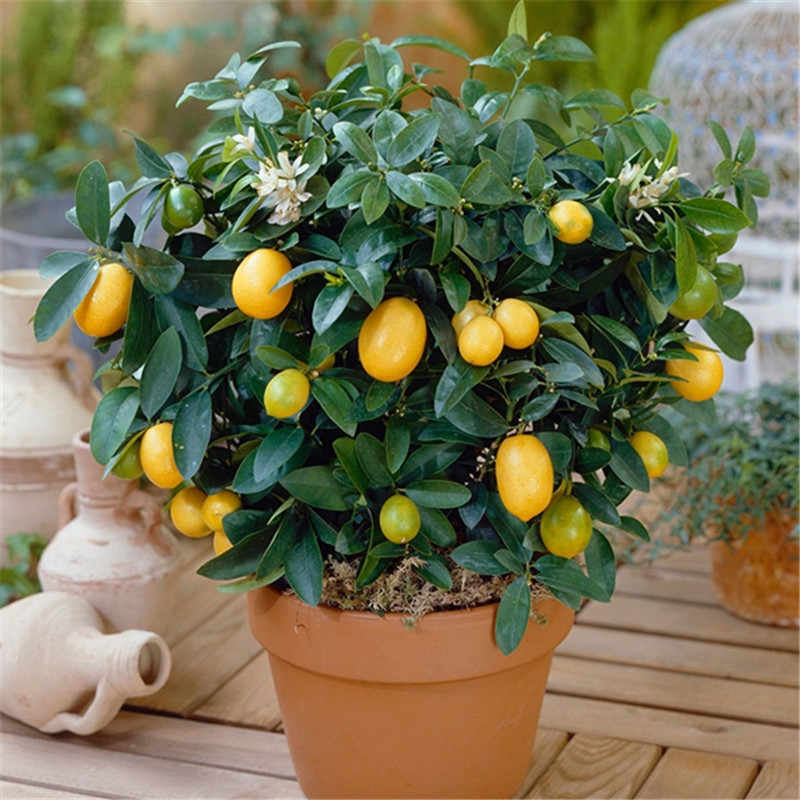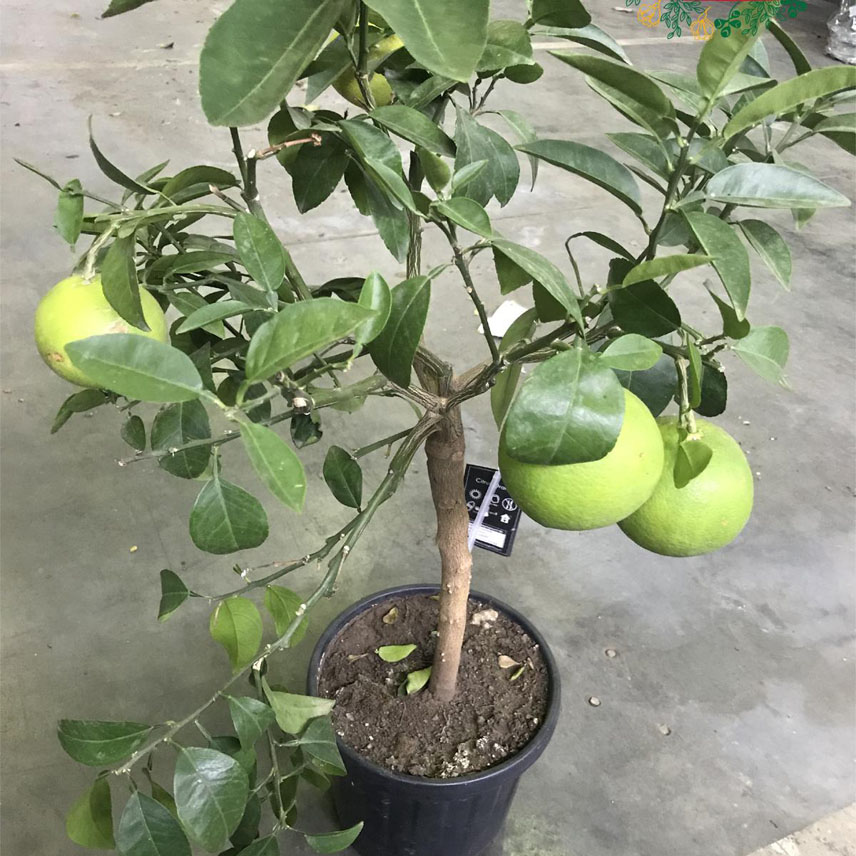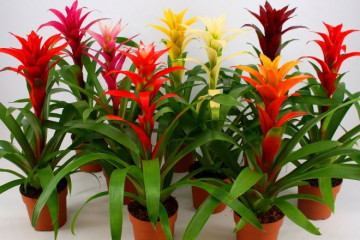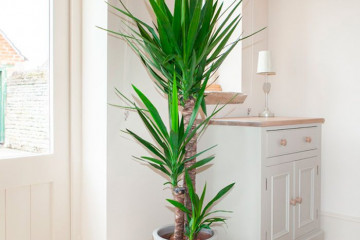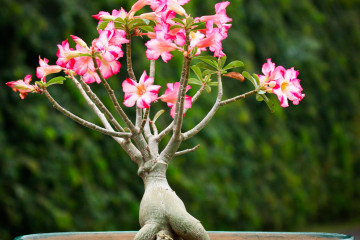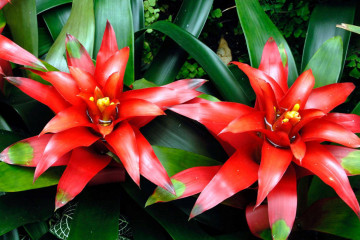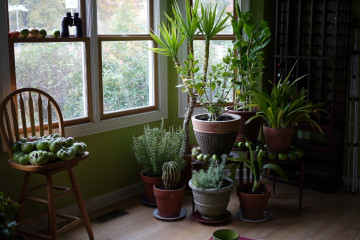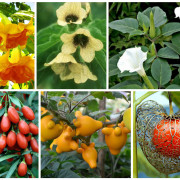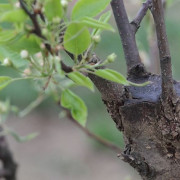Citrus indoor plants - home care
Content:
People have learned to grow fruit trees in their homes for a long time. They develop well indoors, grow quickly, lend themselves to molding, bloom and delight their owners with delicious fruits. Some of the most popular are citrus houseplants.
Citrus trees grow in India, Australia, China, Japan, tropical or subtropical climates. In these regions, there is always warm and humid air, there is enough sunlight throughout the year. Delicious and aromatic fruits grow on trees and bushes. Trees in natural conditions grow up to 12 m in height.
The peculiarities of growing citrus plants include their uneven growth: the violent development of young shoots alternates with a dormant period.
Citrus fruits are mainly remontant plants and can produce crops several times a year.
For fruit, it is best to purchase grafted seedlings or rooted Citrus cuttings.
Their flowers are bisexual.
Although most Citrus fruits are self-pollinating, flower growers recommend artificial pollination. This will increase the yield of fruits.
Fruit ripening period lasts from 5 to 9 months.
Reproduction of plants is carried out using seeds, as well as by cuttings and grafting.
Types of Citrus for home
Many varieties of Citrus are grown indoors. The most common are:
- citrus;
- citron;
- tangerine or citrus net;
- kumquat or fortunella;
- calamondine or citrofortunella;
- lemon;
- grapefruit.
Citrus Diseases
Diseases can be associated with physiological disorders caused by a deficiency or, conversely, an excess of trace elements.
Some signs of excess or deficiency of micronutrients:
- Mature leaves are dull and yellow. This is due to a lack of nitrogen. If there is a rapid growth of young shoots, the plant fattens and does not bloom, then an excess of nitrogen in the soil is possible.
- Leaves turn yellow and shrink, flowering is weak. Possible lack of phosphorus in the soil. With an excess of a trace element, the plant develops and grows poorly;
- The leaf plate warps, pits form on it, folds appear on the leaf along the veins, some of the branches die off, foliage falls off during the flowering period. This is possible due to a lack of potassium. With an excess of potassium, brown necrotic burns appear at the edges of the leaf;
- The growth of defective young leaves, the death of growth points are provoked by a lack of calcium and boron;
- With a lack of iron, manganese, zinc or sulfur, leaf chlorosis is observed (green veins are clearly visible on yellow leaves), young shoots die off.
Citrus plant disease can be caused by pests. These include:
- scale and pseudo-scale (the appearance of wax plaques on leaves and branches);
- mealybug (the appearance of white lumps in the axils of the leaves);
- aphids (clusters of small black insects on young shoots);
- spider mite (yellow dots form on the leaves, white bloom appears below).
Fungal diseases include:
- malseko (branches turn black, then begin to dry);
- gum removal (the appearance of fluid from the wound on the branches and trunk);
- anthractosis (the appearance of wet spots on the leaf, which eventually merge into one);
- powdery mildew (white bloom on the leaves).
If a disease is detected, it is necessary to adjust the watering and feeding of the plant. In case of fungal diseases, damaged branches are removed and sprayed with fungicides.
Indoor citrus care
In order for indoor citrus to develop and bear fruit normally, it is necessary to organize proper watering, lighting, and also set the optimal temperature and humidity.
Watering mode
Water the plants moderately and regularly. They do not like droughts, but waterlogging is also unacceptable for them. The signal for irrigation is the upper dried soil layer. In summer, watering is done daily, in winter - as needed, the main thing is that the soil does not dry out.
Temperature and humidity
For the normal development and fruiting of plants, the ambient temperature should be in the range from +18 to + 22 ° С. Higher and lower lead to inhibition of the development of the indoor plant.
In the spring-summer period, the flower pot can be taken out to the loggia or balcony.
It is also necessary to keep the humidity around 70%. To do this, in the summer, the leaves are wiped with a damp cloth, a humidifier is installed near the flower pot or the plant is sprayed with soft water.
Top dressing
Fertilizers are applied only during the growing season. Top dressing is performed in a pre-moistened soil.
To maintain beneficial microflora, use the drug Baikal or Vostok EM-1.
You can feed it with organic fertilizers. To do this, take an infusion of horse manure at the rate of 100 g per 1 liter of water. Infuse fertilizer for 2 weeks.
You can use an infusion of chicken manure or cow dung in a proportion of 40 g per 1 liter of water.
Mineral and organic fertilizers are applied alternately every 10 days.
Nitrogenous compounds are not used during flowering. During this period, the plant needs phosphorus and calcium.
Wintering plants
In winter, the air temperature should be lowered. If the room is warm, then the life processes of the tree will proceed quite actively. Since photosynthesis of citrus is slowed down during this period, the plant does not receive additional energy. As a result, the tree will be depleted, this can lead to its death.
This time is called the dormant period. It runs from November to February. Then the wood ripens in the citrus, young shoots do not grow.
The air temperature during this period is maintained depending on the type of Citrus. To maintain 12 hour daylight hours for citrus, artificial lighting is arranged.
Pitted orange at home
An orange tree can be grown at home from store-bought orange seeds. However, in this case, it will bloom no earlier than in 7-10 years. In a pot, it can reach 3 meters in height.
If you want to get a harvest faster, then it is better to plant the orange or propagate it using cuttings. After grafting or after planting the cuttings, the plant can bloom in 3-4 years.
Conditions for sprouting orange seeds
In order to grow a seedling, you must adhere to the following step-by-step procedure:
- Seed preparation;
- Preparation of soil and containers for growing a seedling;
- Planting seeds;
- Sowing care;
- Picking and transplanting a finished seedling.
It is better to plant an orange in early spring, so that natural light for the seedlings is sufficient.
How to choose the fruit of the right ripeness and separate the seed
To obtain seeds, you need to take fully ripe fruits, without damage and rot. Ripe oranges have a rich specific smell, they are heavy by weight. The fruit should be evenly colored and free from spots.
The most rounded, large and full-bodied seeds are chosen. They are immediately freed from the pulp, washed in water and soaked for 12-24 hours in water or Epin's solution or other growth stimulant. Soaking will soften the outer shell of the seed, allowing the seed to germinate faster.
Preparing the soil mixture and choosing a pot
Planting soil can be purchased at the store, you can do it yourself. For the preparation of the soil mixture, leafy soil, sand and peat, taken in equal amounts, or leafy soil and peat are used.
For sowing, you can use small containers with drainage holes.
A drainage layer of expanded clay, vermiculite, etc. is laid at the bottom of the pot. Pour soil on top and tamp it a little.
Planting and growing seedlings
The seed must be planted shallowly, to a depth of 1-1.5 cm.
Prepared pots are placed in a warm place. Lighting does not matter at this stage. To create a greenhouse effect, they are covered with a piece of polyethylene or a cut plastic bottle on top.
You can pre-germinate the seeds. To do this, place a cloth in the container, which is pre-moistened. Seeds are placed on it, which are also covered with a damp cloth on top. Arrange a greenhouse. The seeds will sprout in a few weeks. After the emergence of seedlings, the seedlings are transferred to a well-lit place.
When 2 leaves appear, the seedlings must be picked, when 4 leaves appear, they are transplanted by transferring to a permanent place.
Sapling pots are placed on the southeast or southwest window sills.
Watering the seed and sprout
When germinating the seed, the soil should not be overdried and waterlogged. Therefore, the ground is periodically sprayed with water from a spray bottle. After emergence, the soil should also be moderately moist.
Citrofortunella home care (calamondin)
Calamandin what is it
Another evergreen citrus plant with a beautiful name is calamondin citrus. It appeared as a result of crossing kinkan and mandarin plants. It is also called Chinese mandarin and golden orange. Grown indoors, as well as in winter gardens. It can be presented in standard form or as a bonsai.
Under natural conditions, it grows from 3 to 7 m in height, at home - from 0.6 to 1.5 m.
The flowers are white, self-pollinating.
The fruit of calamondin is orange, round, slightly flattened at the top and bottom, up to 4.5 cm in size. The pulp is sour, consists of 6-8 lobules, covered with a thin fragrant skin.
Care
Citrofortunella grows well in indoor conditions. Calamondin care consists in creating optimal conditions for the development and fruiting of the plant.
Illumination
One of the requirements for caring for calamondin at home is the organization of lighting.Daylight hours should not be less than 12 hours, so in winter there is a need for artificial lighting. In summer, it is advisable to place a citrus hybrid in the garden. The place should be slightly shaded so that direct sunlight does not fall on the plant.
Temperature regime
During the growing season, the ambient temperature should be within the range from +18 to 27 ° C. If the temperature is high, the plant will shed its fruits.
During the rest period, the temperature is reduced to + 10-15 ° C.
How to water
The soil in the pot should be moderately moist. Water the plant daily in summer, in winter - no more than 1 time in 1-2 weeks.
For watering, the water should be soft and at room temperature. After watering, the water that has poured into the pan is removed. If the air is dry, then the crown is additionally sprayed.
Top dressing
Fertilizer is applied during the growing season 1 time in 7-10 days. For this, complex fertilizers for citrus fruits are used.
Earth mixture
The soil is used neutral. You can take a special soil for citrus fruits. To prepare the soil on their own, take 2 parts of sod land and 1 part of rotted manure and sand.
How to care for a lemon tree at home
Caring for a lemon, just like for any other citrus fruit, consists in the correct organization of the conditions for its development. The most suitable varieties for growing in homes are Pavlovsky, Eureka and Maikop.
Illumination
Daylight hours for a lemon tree should be at least 12 hours. The most suitable places are southeast and southwest windows.
Do not allow direct sunlight to hit the leaves of the plant. If the flowerpot is located on the south window, then in summer you need to shade the citrus. In winter, additional lighting is organized in the evening.
Temperature regime
During flowering, it is necessary to maintain the ambient temperature no higher than 20 ° C, otherwise high temperatures will provoke flowers to fall off.
In winter, the optimal temperature for lemon will be from +14 to + 16 ° С.
How to water
Depending on the temperature and dryness of the air, watering is performed daily in summer or once every 2 days, in winter - 2 times a month.
It is advisable to wipe the leaves from dust and dirt at least once a month. This will help to improve the photosynthesis of the plant.
Top dressing
For the normal development of the plant, it is recommended to fertilize with mineral compositions 1 time in 2 weeks during the growing season (from March to September). Fertilizer is applied after watering. You can use an infusion of cow dung and an infusion of wood ash. Fertilizers are best alternated.
Earth mixture
When transplanting lemons, use a ready-made soil mixture or make it yourself. For this, peat, sod and leafy soil, sand are mixed in equal proportions.
Mandarin: growing and care at home
This is another citrus that grows well in the home and produces tasty and aromatic fruits.
Illumination
The most suitable place for the plant is the southern, southeastern or southwestern window sills. During the growing season, it is important to protect the tangerine from direct sunlight. For protection, the window can be covered with gauze. In the autumn-winter period, it requires additional artificial lighting.
Temperature regime
The optimum temperature for the development of mandarin is + 20 ° C. For successful budding, it is better to set the room temperature + 16-18 ° С. For wintering, citrus needs a temperature of + 14-16 ° C.
How to water
Watering is carried out with settled warm water daily in summer, in winter - once every 2 weeks. The soil should be moderately moist.
Top dressing
Feeding the plant begins in April and ends in September-October. During the rest period, the tangerine is not fed. If you do not apply fertilizers, then the fruits will taste bitter.
Earth mixture
For cultivation, use a special soil for citrus fruits. For self-preparation of the soil, take 2 parts of leafy land, 1 part each of humus, sand and sod land.
Grapefruit tree at home
Like any citrus fruit, grapefruit will grow and bear fruit only if the optimal development conditions are observed for it.
Illumination
The duration of daylight hours should be 10-12 hours. In winter, they arrange backlighting in the evening, if the day is cloudy - throughout the day.
Temperature regime
In the spring-summer period, the temperature should be within + 20-27 ° С, in winter - + 4-8 ° С.
How to water
The soil should be moist, but not waterlogged. In summer, watering is carried out daily, in winter - once every half month.
Top dressing
Fertilize the plant 1 time in half a month from April to September. In winter, top dressing is not carried out.
Earth mixture
As with any citrus fruit, it is best to use Lemon soil. For self-preparation, take in equal parts sod land and humus, two parts of leaf land and ½ part of sand.
Observing the simple rules of caring for citrus fruits, you can always grow beautiful small trees at home, which will delight the owners with tasty and aromatic fruits.
